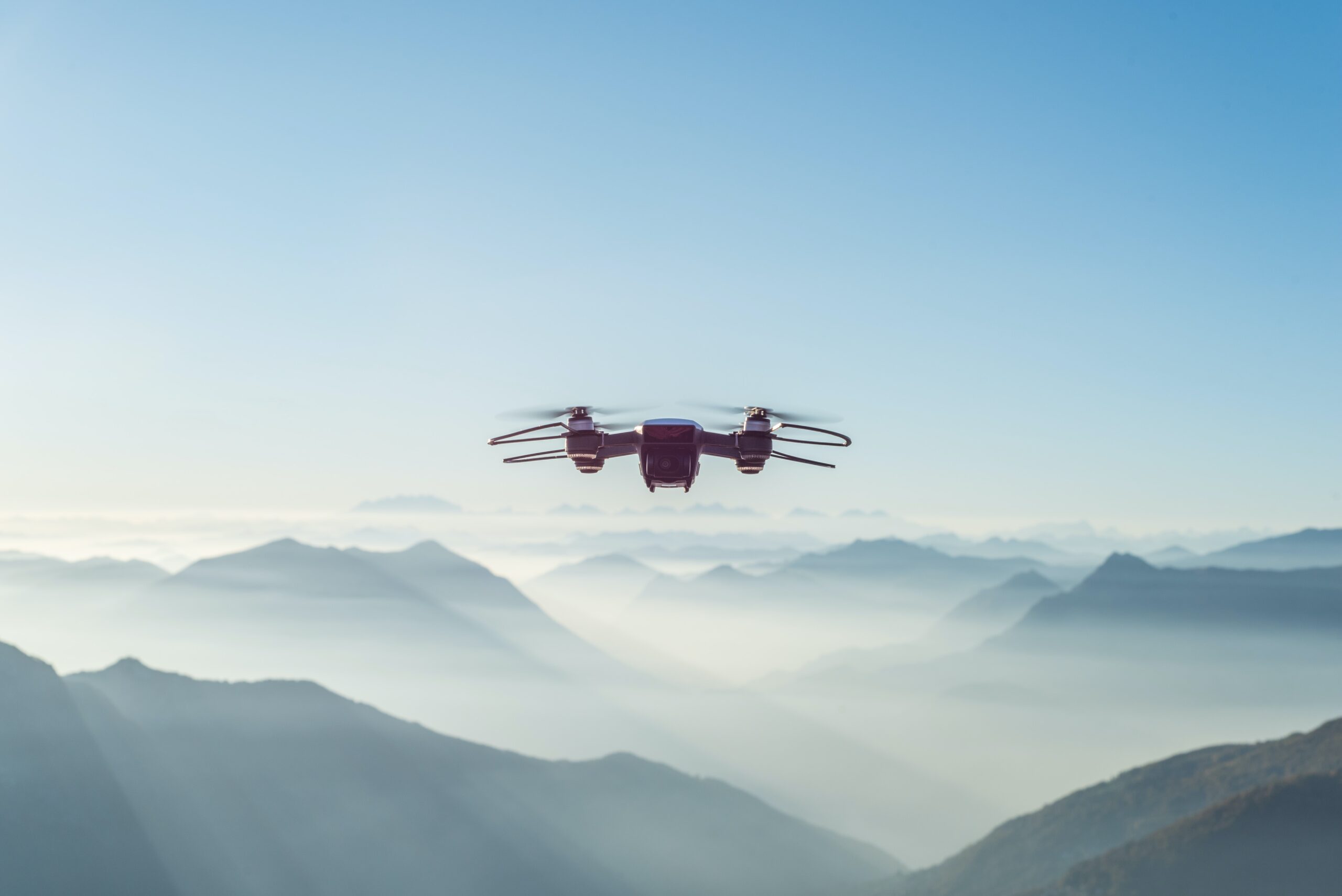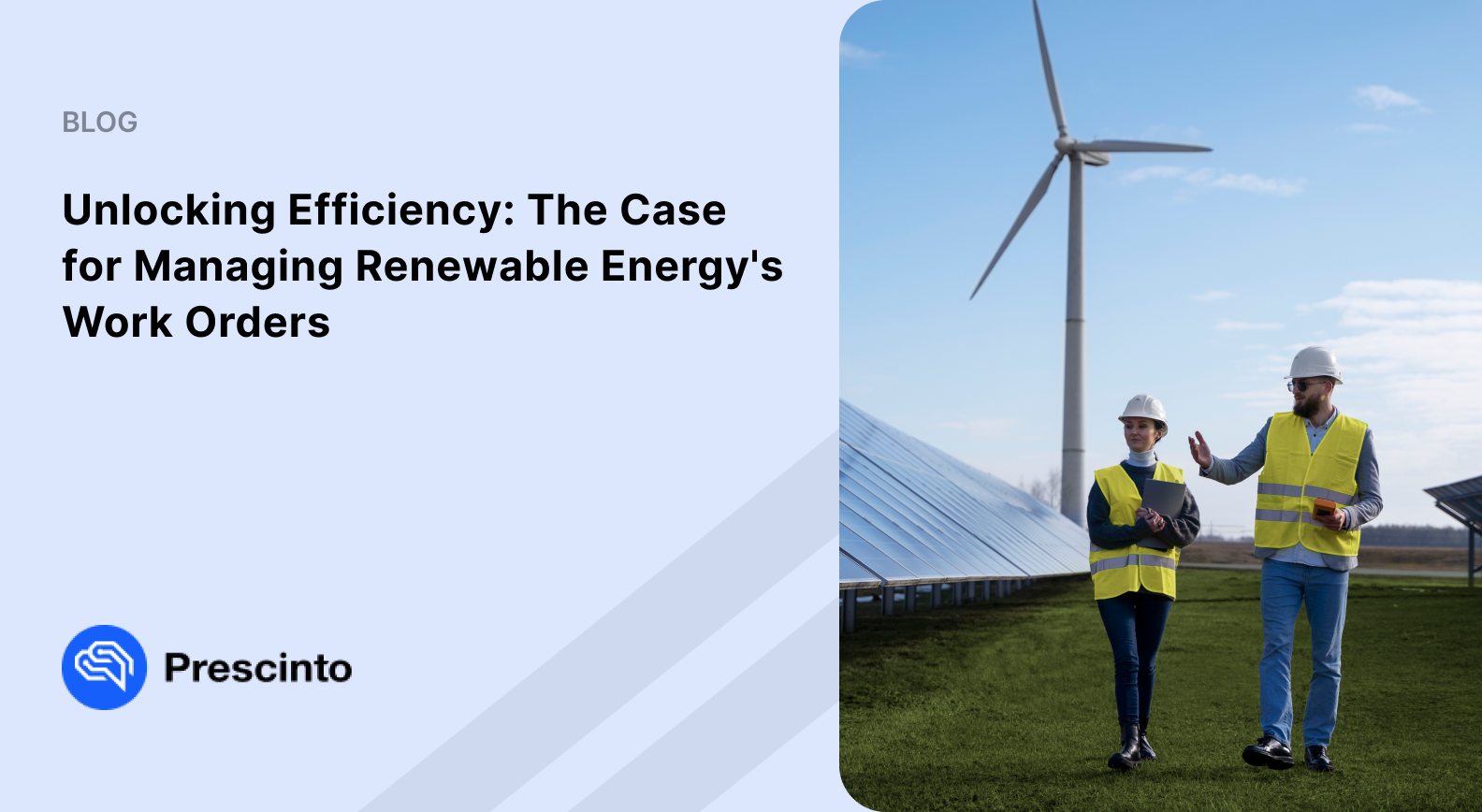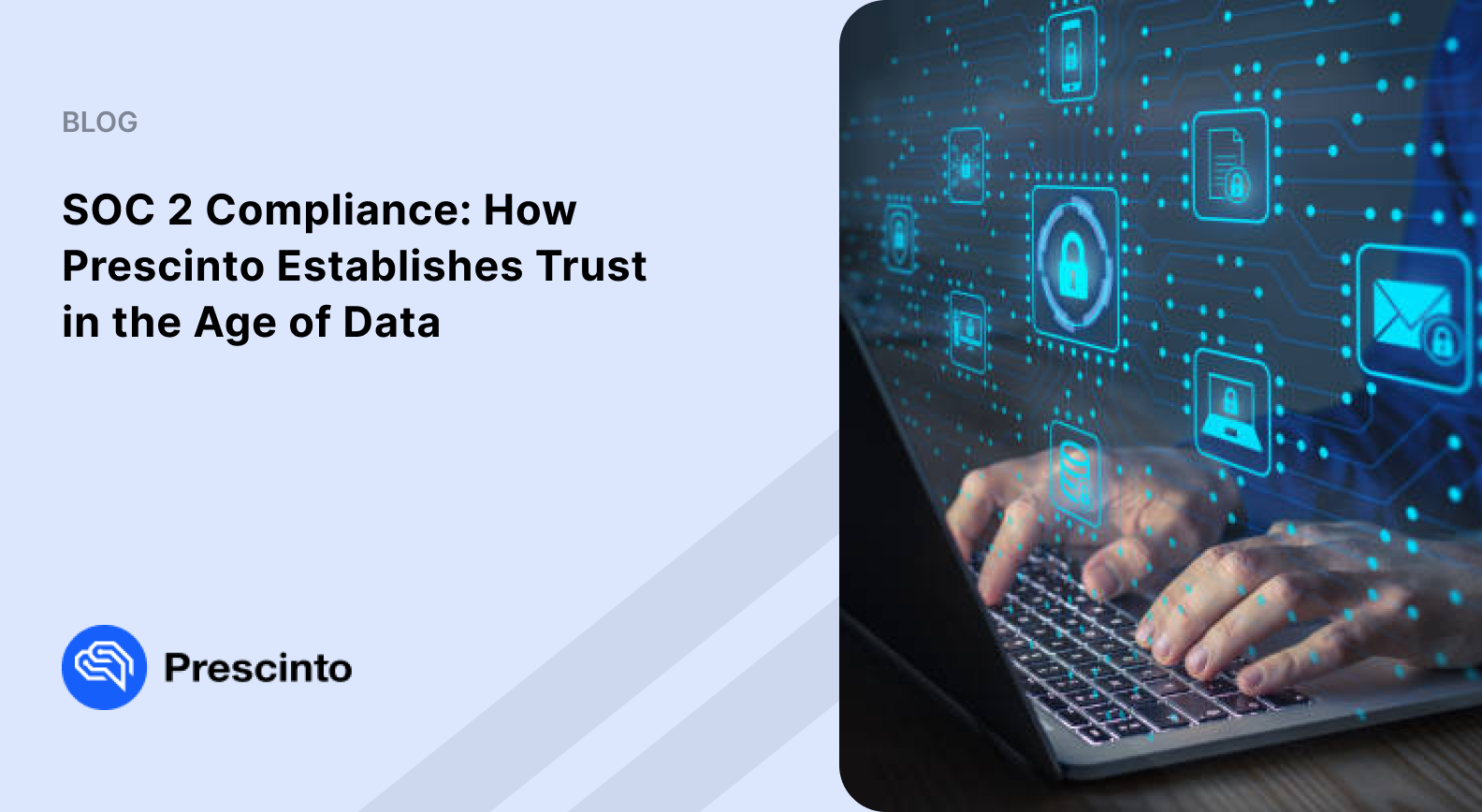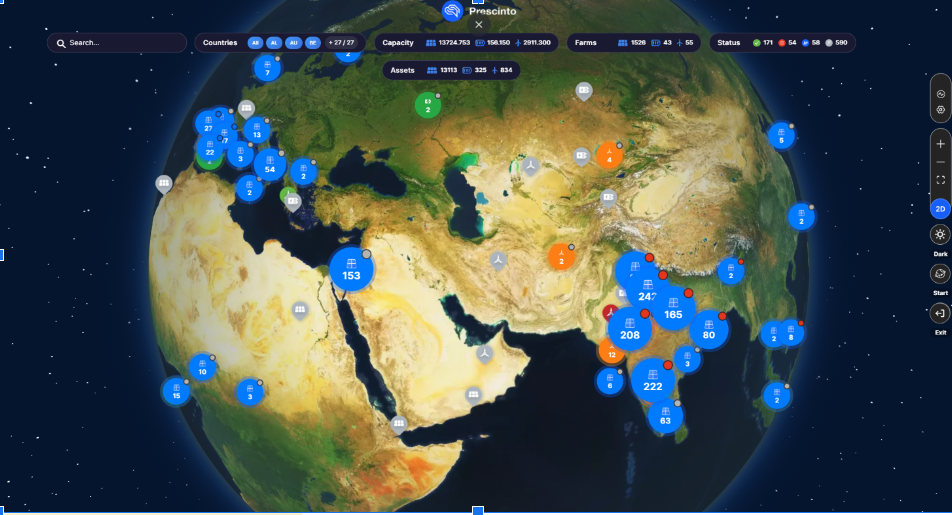5 Ways Drones are Revolutionizing the Solar Energy Industry

- July 28, 2023
- Prescinto
It’s no secret that solar energy has been gaining momentum as a game-changer in the global energy landscape. Solar photovoltaics (PV) generation rose by a record 270 TWh (up 26%) in 2022, reaching almost 1,300 TWh. It indicated the largest absolute generation growth of all renewable technologies in 2022.
Global solar PV generation marked a historical milestone by surpassing wind for the first time ever in 2022. Solar PV additions are projected to continue to increase in 2024, according to the International Energy Agency. However, amid soaring growth projections, there have been a few critical challenges that the solar PV industry has been facing. Let’s take a look at those challenges.
In this blog, we will look at the key challenges faced by the solar industry and uncover five game-changing ways that drones transform the solar energy industry by helping overcome those challenges.
Critical Challenges Faced by the Solar PV Industry
Drones have become a game-changer in the renewable energy sector, offering a range of innovative applications that optimize solar PV installations’ performance and maintenance. However, in the absence of drones, the industry would face key challenges that may hinder the industry’s scalability, competitiveness, and ability to meet the ever-increasing demand for clean and sustainable energy solutions. Let’s take a closer look.
Critical Challenges Faced by the Solar PV Industry
- Limited Data Collection
- Inefficient Anomaly Detection
- Increased Costs
- Labor-Intensive Manual Inspections and Safety Risks
- Limited Scalability and Reduced Competitiveness
Limited Data Collection
Accurate and comprehensive data is essential for understanding the performance of solar PV installations, identifying potential issues, and making informed decisions for optimization. Without efficient data collection methods, the solar PV industry may struggle to gather real-time information on solar energy generation, irradiance levels, and system health.
Manual data collection can be time-consuming and labor-intensive, leading to delayed insights and hindering proactive maintenance. Inadequate data may also impact the ability to assess the long-term performance of solar PV systems and make necessary adjustments for increased efficiency and profitability.
Inefficient Anomaly Detection
The solar photovoltaics industry faces significant challenges stemming from the inefficiency in fault detection. Timely detection of faults or issues in solar PV systems becomes challenging without the aid of drones, leading to potential decreases in energy production and higher maintenance costs.
The lack of drone technology limits the industry’s ability to integrate further advanced technologies, such as artificial intelligence (AI), machine learning (ML), and advanced data analytics, which otherwise provide valuable insights into solar plants’ performance and efficiency. As a result, solar PV companies may struggle to optimize system performance, diagnose potential problems promptly, and make data-driven decisions to enhance overall operational efficiency and power generation capacity.
Increased Costs
While solar energy offers long-term cost savings through reduced operational expenses and lower dependence on traditional energy sources, the initial investment required for solar PV installations can be substantial. Without cost-effective solutions for inspections and data collection, the solar PV industry may face higher expenses related to labor, equipment, and maintenance. Manual site surveys, inspections, and maintenance can lead to prolonged project timelines and increased manpower requirements, translating to higher overall costs. Moreover, without efficient data-driven insights powered by advanced technology, identifying areas for optimization and ensuring maximum energy production may become costlier and more complex.
Labor-Intensive Manual Inspections and Safety Risks
Technicians Typically Spend 10 Hours/MW for Manual Inspection of Solar Modules.
– Source: Wood Mackenzie
Traditional methods of inspecting solar PV installations often involve human personnel climbing rooftops or navigating through solar farms to identify issues and perform maintenance. These manual inspections can be labor-intensive, time-consuming, and expose workers to potential safety hazards, especially when dealing with installations at height or in remote locations. The risk of accidents, falls, and other on-site incidents can lead to injuries and even fatalities, compromising worker safety and well-being. Additionally, manual inspections may not always provide comprehensive and accurate data, leading to delayed fault detection and potential performance issues.
Limited Scalability and Reduced Competitiveness
The solar PV industry faces a dual challenge due to the limited scalability caused by inefficient data collection and monitoring methods, coupled with reduced competitiveness in the absence of drone technology. Without drones’ advanced capabilities for data collection and monitoring, companies may struggle to manage and monitor numerous solar sites effectively, hindering scalability to meet the growing demand for renewable energy solutions.
Additionally, drone technology empowers solar PV companies with increased efficiency, cost savings, and data-driven decision-making, providing a competitive advantage that companies without drones may find challenging to match. This reduced competitiveness could impede industry growth and market share, limiting the ability to offer innovative and cost-effective solutions in a fiercely competitive renewable energy landscape.
How Are Drones Used in Solar Plants?
Drone analytics serves as a tool that identifies defects at the solar panel level. It can be utilized as a standalone solution for reviewing solar module defects. Thermal imaging and its analytics involve third-party drone vendors to capture thermal and visual raw images. In a multi-step process, these images are used to create high-resolution, detailed images (orthomosaics).
What is the Role Played by Artificial Intelligence in Drone Analytics?
The AI/ML-based image processing examines the captured images to find and categorize defects at the individual panel level. Once the system detects the defects, it overlays the images with the plant architecture to determine their respective table and string numbers. By using the image’s geo-coordinates, the system maps the defects to specific tables, making it easier to locate them in the field.
5 Major Benefits of Leveraging Drones for Solar Asset Performance Monitoring (APM)
Drone technology holds immense significance in the solar PV industry, transforming the way solar energy is harnessed and managed. By offering efficient aerial inspections, real-time data collection, and automated anomaly detection, drones enable proactive maintenance, ensuring optimal system performance and increased energy generation. Let’s deep dive into the 5 key benefits of leveraging drone analytics in the solar PV industry.
5 Major Benefits of Leveraging Drones for Solar APM
- Effective Real-Time Data Collection
- Automatic Anomaly Detection
- Cost Optimization
- Efficient Remote Operation and Reduced Safety Risks
- Scaling at Speed and with Competitive Edge
Alt Title: 5 Major Benefits of Leveraging Drones for Solar APM
Effective Real-Time Data Collection
Drones equipped with high-resolution cameras and sensors can perform automated aerial surveys, efficiently collecting accurate and real-time data on solar energy generation, irradiance levels, and system health. They capture detailed imagery and data, providing real-time insights into the condition and performance of the solar panels and the surrounding environment.
Drones can detect shaded or malfunctioning panels and identify hotspots to help assess the overall energy generation efficiency promptly. When equipped with thermal cameras, they can conduct thermal imaging surveys, helping to identify hotspots or areas of overheating in solar panels. This real-time data aids in diagnosing potential issues related to panel performance or electrical connections. Drones eliminate the need for labor-intensive manual data collection, enabling faster and more comprehensive insights into the performance of solar PV installations.
Automatic Anomaly Detection
Early detection of defects in PV modules is vital to mitigate cumulative losses that can impact budgeted energy generation targets. Drone analytics plays a pivotal role in automatically identifying various types of defects and anomalies. Drone analytics helps identify critical defects and anomalies automatically, such as bypass diode failure, cable point heating, and vegetation, among others. With drones, solar PV companies can proactively identify potential issues and make data-driven decisions for optimization, leading to increased efficiency and profitability.
Cost Optimization
Drones can perform automated inspections of solar PV installations, reducing the need for manual labor and associated costs. This efficiency streamlines the inspection process, enabling more frequent and thorough assessments without incurring additional expenses. Moreover, drones can quickly identify faults and issues in solar PV systems, enabling prompt responses and reducing the potential impact of prolonged downtime and costly repairs. Drone technology can also enable proactive maintenance planning based on real-time data. By addressing potential issues early, solar PV companies can prevent costly breakdowns and extend the lifespan of their installations.
| A Generation Increase of 5.4 GWh in 365 Days: A Solar Giant’s Success Story with Prescinto |
Efficient Remote Operation and Reduced Safety Risks
By utilizing drones for inspections, solar PV companies can minimize the need for human workers to physically climb rooftops or access challenging terrain, mitigating safety risks associated with working at heights and in hazardous environments. Authorized technicians can pilot drones from a safe distance to collect ariel data. This ensures that operators are not exposed to potential on-site hazards, enhancing worker safety during inspections and monitoring activities.
Drone technology, coupled with AI-powered data analytics, provides valuable insights into the condition of solar PV installations. This data-driven approach allows for proactive maintenance planning, reducing the likelihood of critical failures and safety-related incidents. In addition, drones can be deployed for safety assessments and risk evaluations, enabling solar PV companies to identify potential safety hazards and implement necessary measures to maintain a secure working environment.
Scaling at Speed and with Competitive Edge
Drones equipped with advanced sensors and cameras can remotely monitor multiple solar PV sites simultaneously. This capability allows companies to manage a larger portfolio of installations efficiently, improving scalability without a significant increase in labor requirements. Leveraging drone technology can lead to cost savings in various aspects of solar PV operations. Reduced labor costs, optimized maintenance schedules, and data-driven resource allocation contribute to increased cost efficiency, enhancing competitiveness in the market.
Drones provide real-time data access, allowing solar PV companies to make informed decisions promptly. Real-time insights into energy generation, system health, and environmental factors aid in staying agile and competitive. The seamless integration of drones in operations optimizes resource utilization, enhances data-driven decision-making, and ensures that solar PV companies are well-positioned for sustainable growth and success.
Prescinto: Thinking Beyond Drone Analytics
Module Health Assessment with Prescinto’s Drone Analytics
Managing a massive 100 MWp solar power plant with over 250k modules spread across 350+ acres of land can be challenging. Manual identification of module defects becomes time-consuming and inefficient. By leveraging Prescinto’s advanced drone analytics, users gain actionable insights within a few hours, facilitating the detection of faulty solar PV modules and effective planning of remedial actions.
Proactive Anomaly Detection
With Prescinto’s drone analytics, solar PV companies can automatically identify several types of defects and anomalies, such as
- Bypass diode failure
- Dirt/shadow
- Vegetation
- Hotspot
- Cable point heating
- Hot string
- Module short circuit
- Hot module
- String reverse polarity
Track Multiple Sites and Analyze Historical Drone Inspection Data
Prescinto enables solar PV companies to track multiple drone missions seamlessly. Historical drone inspection data can be accessed and analyzed, regardless of past vendor choices. Historical drone inspection data can be accessed and analyzed, regardless of past vendor choices. As an independent drone analytics provider, the freedom to select vendors based on specific dependencies, such as drone pilot availability, cost, service quality, and insights relevance, is granted. Instant comparison with historical thermal orthomosaics provides valuable insights for planning future preventive and corrective maintenance strategies and generating work orders.
Drone Analytics + Digital Twin in Solar
On an IoT platform, a digital twin is a virtual representation of a physical asset, a machine, a vehicle, or a device, according to Oracle. In solar plants, a digital twin is a digital representation of the asset’s data, processes, operation status, and lifecycle. Individual drone inspections provide data, which is then fed into Prescinto’s advanced algorithm for comparison with the existing digital copy of the plant. As the algorithm accumulates sufficient data, it detects performance issues, conducts simulations, and generates valuable insights previously unattainable with legacy technologies.
Drone Analytics + String Analytics in the Solar PV Industry
Prescinto’s integration of drone analytics with string analysis goes beyond traditional drone analytics, which merely detects anomalies without quantifying estimated losses. Prescinto stands out as the sole vendor with the exceptional capability to combine drone analytics with string analysis. This powerful combination enables the generation of precise insights and quantification of estimated losses resulting from defects. Operators can leverage this data-driven approach to strategically plan and prioritize remedial actions based on the impact on energy generation.
| Improved Power Generation. Reduced Costs.
Optimize Your Solar O&M with Prescinto’s Advanced Drone Analytics. |
FAQ
What is thermal imaging and how does it work?
Thermal imaging captures and visualizes the infrared radiation emitted by objects based on their temperature. Thermal cameras detect this radiation, convert it into electrical signals, and map it to a color scale, creating thermal images with temperature variations represented by different colors. In solar PV inspections, it helps identify hotspots on panels, indicating potential issues affecting performance. This enables timely maintenance, optimizing energy generation, and extending system lifespan.
Is Prescinto compatible with any specific drone platform?
Yes, Prescinto is agnostic to any particular drone platform. It can ingest and process drone thermal images from any third-party drone imaging vendors, as long as they meet Prescinto’s image-analysis standards. This flexibility allows solar photovoltaic companies to work with their preferred drone vendors. This also ensures seamless integration of thermal data into Prescinto’s analytics, providing valuable insights for solar PV inspections and asset management.
- Topics: Monitor and Analyse Module, Solar
About Author






